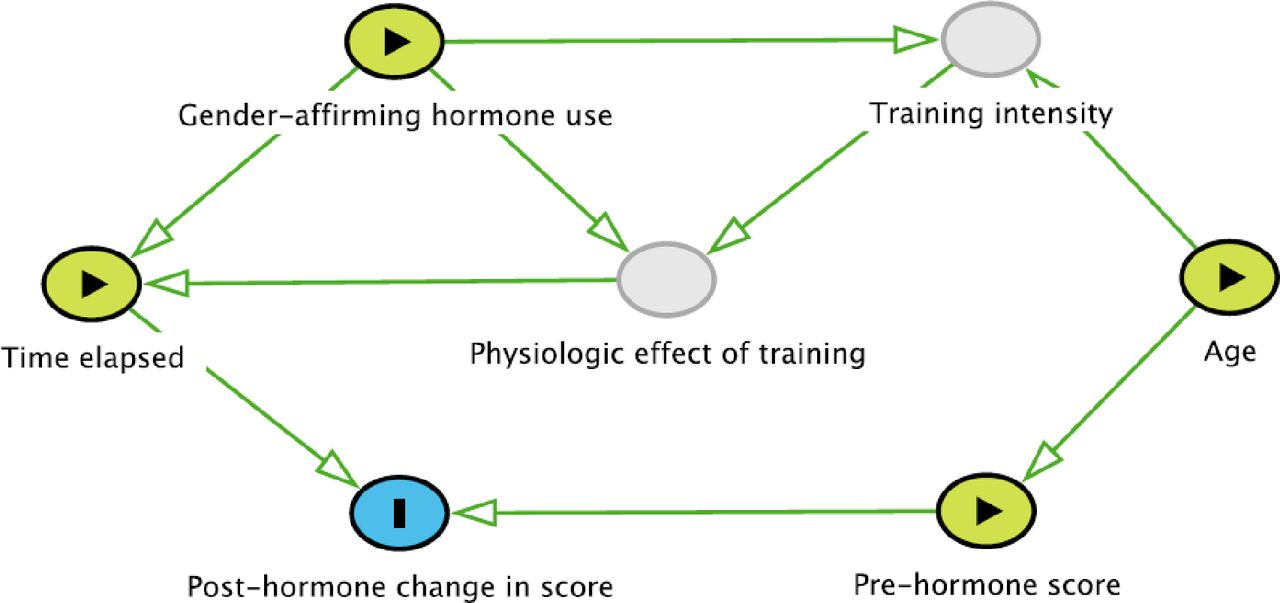Testosterone and female sports
Participation in exercise and sports has many health benefits and all people should have the opportunity to participate. After puberty, testosterone gives male athletes a competitive advantage over female athletes. Because of this, female sports are considered a protected category to ensure fairness in competition. However, this does not account for women with naturally elevated levels of testosterone or prior exposure to testosterone. In recent years professional organizations have tried to establish guidelines for inclusion of both women with medical conditions that result in elevated testosterone and for transgender women in female sports. The most recent recommendations have included maintaining serum testosterone levels in the natal female range for at least 12 months in the belief that time period should be sufficient to eliminate the benefits of prior higher levels of testosterone exposure. However courts have repealed these guidelines, citing a lack of supporting evidence.

Our Study
We studied the longitudinal influence of hormone therapy on athletic performance and body composition among adults. US Air Force members are required to take a semi-annual standardized fitness assessment including: measurement of height, weight, and waist circumference; maximum number of sit-ups and push-ups in 1 minute; and a timed mile and a half run. For our study, we measured changes in scores from fitness assessments, performed by active duty transgender service members, which occurred between 1-year before starting medical transition and 2 ½ years after. We also compared the performance of the transgender servicemembers to the average performance of all Air Force members under the age of 30 from 2004 to 2014.
Our Findings
Transgender individuals have been able to serve openly and have access to gender affirming hormone therapy in the United States military since 2016. In the Air Force, requests to begin or continue hormonal therapy are reviewed by a centralized clinic. Of the 222 transgender service members who requested permission to start or continue treatment, we had complete fitness and medical data on 46 transwomen and 29 transmen. The average age was 26.2 with a standard deviation of 5.5 years.
- For transmen, there was no significant change in body composition (as measured by height, weight, and waist circumference) over time. They were able to perform the same number of sit-ups as cismen prior to hormone therapy and improved with therapy. Push-ups and run times reached that of cismen by the 1-year point.
- For transwomen undergoing hormone therapy, there was an increase in weight over time but no change in waist circumference. Push-ups and sit-ups equalized with ciswomen by the 2-year mark. However, transwomen still retained an advantage in run times on the mile and a half run compared to the average time for ciswomen 2 ½ years after starting medical transition.

What does this mean?
In elite level or collegiate athletic competition, where a 1-2% advantage in speed or strength is often the difference between victory and defeat, governing bodies need to re-examine guidelines for inclusion of transgender and other women with elevated testosterone levels and determine what evidence-based changes are required to ensure a level playing field. They will need to stand up to legal scrutiny. In youth and recreational sports there is such a broad range of ability, training, and development that differences from prior testosterone after 12 months of suppression may not have a meaningful competitive impact and the benefits of inclusion of all athletes should take priority. When establishing guidelines for youth and recreational sports, the question has to be: “What is the best thing for all our athletes?”
Authors and Affiliations:
Dale Ahrendt M.D. – Adolescent Medicine, San Antonio Military Medical Center, Fort Sam Houston, Texas, USA
Timothy Roberts MD, MPH – Adolescent Medicine , Children’s Mercy Division of Adolescent Medicine, Kansas City, Missouri, USA
Joshua Smalley DO – Adolescent Medicine , San Antonio Military Medical Center, Fort Sam Houston, Texas, USA
The authors declare no competing interests
Reference: , , ffect of gender affirming hormones on athletic performance in transwomen and transmen: implications for sporting organisations and legislators.